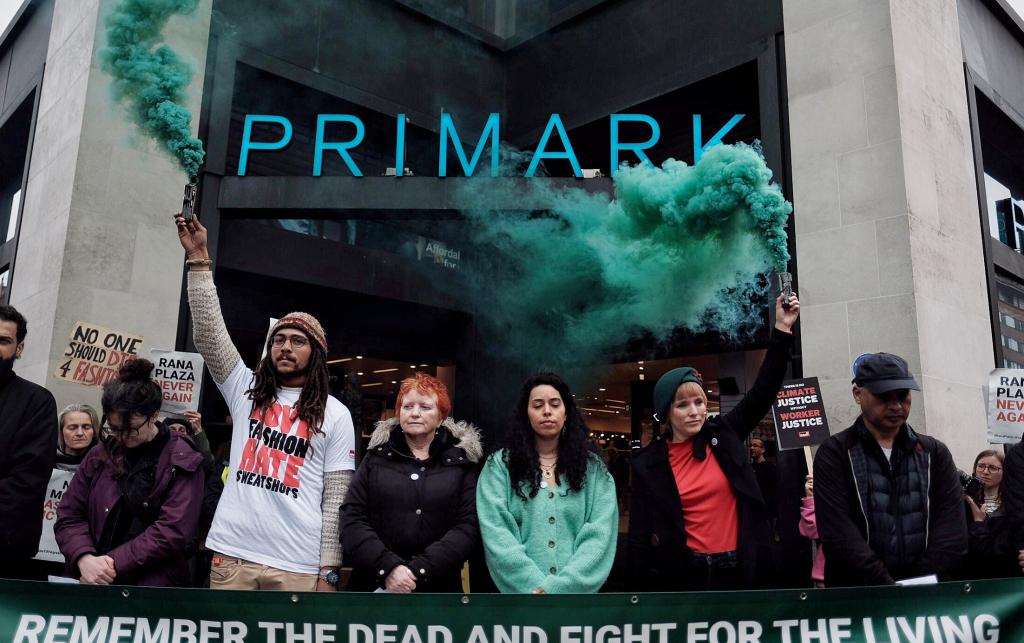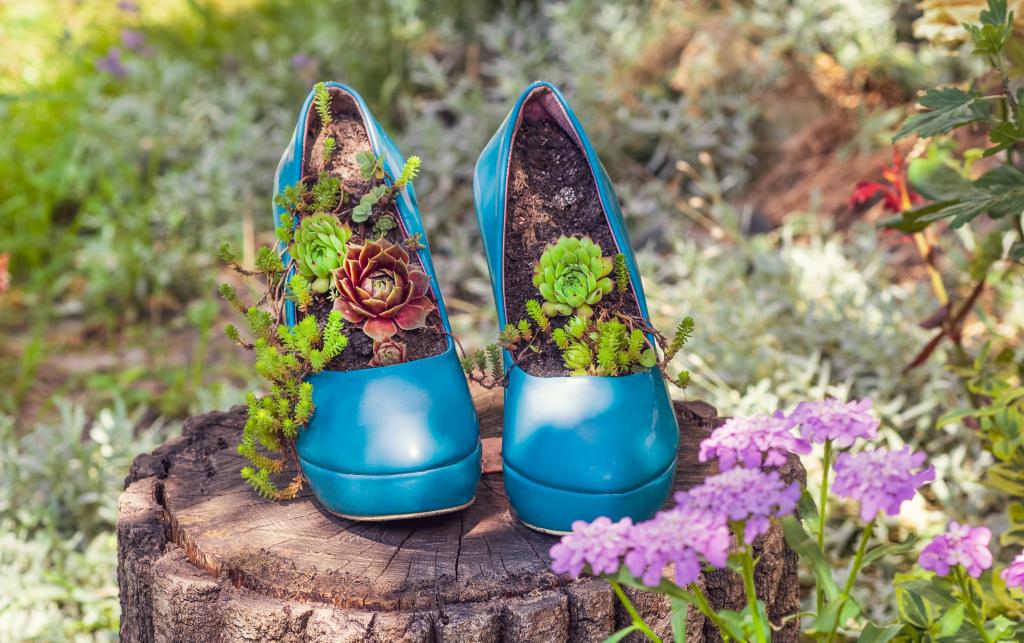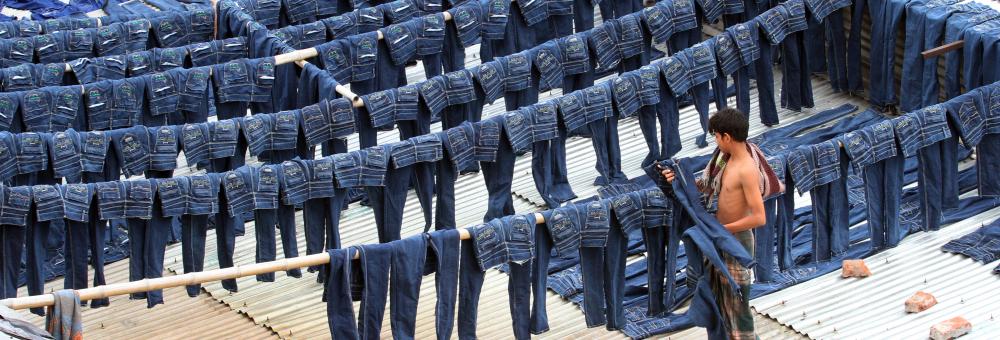Fashioning alternative clothes
In essence, I am very optimistic. It’s kind of like dreaming but that’s how you do innovation – you dream really, really hard.”
This chapter is a place to explore the role that fashion would have in a new society that has different economic values to our present- day world. It is a space to discuss how fashion would change if society was structured around our long-term societal needs and well-being, rather than short-term gains for a minority. Through the essay that follows, the writer considers some of the outcomes that could emerge through thinking about the world from a different economic and cultural starting point.

By Tansy E. Hoskins
Tansy E. Hoskins is an award-winning journalist covering the textile, clothing, and footwear industry. She is the author of two books – The Anti-Capitalist Book of Fashion and Foot Work - What Your Shoes Are Doing To The World.
When I wrote The Anti-Capitalist Book Of Fashion120 , I invited readers to consider two central questions. The first is: what kind of a society do you want to live in? We currently live in a society where some people starve, while others hoard more money than can be spent in 1,000 lifetimes. A society where our planet is displaying signs of deep distress with wildfires, typhoons and floods wreaking havoc, where forests are being razed to the ground, and where entire species have gone extinct. Access to medicine, housing, education, and opportunity is based upon access to wealth, and life is hampered by prejudices such as racism and homophobia. We have a society where it continually feels like the worst people are in charge.
If this is not your ideal, then think about what kind of society you want to live in. Maybe you can picture something a little different with access to free healthcare and education assured, or maybe it is radically different with no such thing as a millionaire, let alone a billionaire, where people work only as much as their community needs and spend the rest of their time at leisure. Where everything is carefully organised to run in harmony with the biosphere, and there are no arms, meat, or fossil fuel industries, no prison-industrial complex, and racism, sexism, homophobia, and transphobia have been banished.
Once you know what kind of society you want to live in, consider the second question: in this society, what is fashion for? Is it for fun, or to protect and enhance the body, to act as a creative outlet, to represent culture and history, to seduce or repel, to showcase and celebrate difference, to bring joy?

The point of this thought exercise is to reframe typical questions that are asked about fashion and to see it as a performance of deeper social issues. Our fashion and clothing systems have been broken by capitalism and now exist as an excuse for the rich to exploit the poor. What fashion is currently for is to make billions for a small cabal of people, to keep in place a system of subjugation, to restrict and control populations, and to distract from inequality and crisis. No matter the makeup of the ideal society you have dreamt up, I doubt you had this in mind as the purpose of clothing. If, however, you can imagine another purpose for clothing and fashion, you can start to imagine a new world. What follows are some of my ideas for reimagining the fashion industry. They might seem radical, but in reality, as we stand on the edge of a climate precipice, they are necessary. Once you have read them, I invite you to write your own vision and then to get to work making it happen.
Ideas for reimagining fashion
Recognise clothing as a human right. A rights-based approach means the right to clothing can also be linked to other rights such as the right to environmental justice, a living wage or to a trade union.
Decommodify public services globally to ensure food, education, health, housing, care, clean energy, and sanitation for all.
Establish living wages as a universal right.
Eliminate the production of trillions of items of clothing by reorientating production away from corporate profit and towards communal need.
Disband fashion corporations as unfit to be in charge of clothing production, and of our common cultural heritage, and redistribute their assets amongst garment workers and land-based clean-up initiatives.
Establish job guarantees for all workers in fashion supply chains. This would release billions of people from soulless profit-work, who would now have the freedom to choose where and how they work, safe in the knowledge they’ll be cared for throughout their life.
Offer big fashion CEOs and shareholders climate jobs cleaning up the Atacama Desert, the Nairobi River, the Buriganga River, and the Ghanaian sewage system.
Instigate a global pause in production to establish how to best use the billions of tonnes of clothing that has been produced over the past hundred years.
Establish repair and redistribution warehouses in every neighbourhood. Reskill populations in the fundamental knowledge of how to care for and create the items that protect and adorn our bodies. Maintain these workshops as key spaces for preventing loneliness and include the repair and creation of furniture, electronics, tools, and anything else people want to fix.
Establish free lifelong education classes available for sewing, knitting, spinning, embroidery, pattern cutting, and shoe repair.
Maintain these warehouses as clothing libraries with people free to borrow anything – from party dresses to steel toe capped boots – to allow for the shrinkage of personal wardrobes.
Replace globalised production with small scale, localised and closed loop production to meet the demands of regional communities.
Focus on design as the process of recreating clothing from existing material – redistributing the mountains of existing clothes, and where necessary turning them into new clothes, shoes, and bags.
Ban the use of fossil fuel-intensive ‘virgin fabric’.
End the process of recycling fabric by transporting it around the world, shredding it then bleaching it and dyeing it – an intensive waste of fuel, water, and time.
Shred locally any clothing that is beyond use and move into other industries such as home renovation. Establish circular-use practices based on the principle that material is only ever borrowed from the Earth and must not be made unusable.
Increase research into bio-fabrics, prioritising the parts of plants that are not eaten as food.
Stop the allocation of large tracts of land for growing single intensive cash crops, stop cutting down forests for grazing land, and stop factory farming of animals.
Restore land to the stewardship and jurisdiction of Indigenous communities, with land privatisation becoming a thing of the past.
Remove the divide between producers and consumers by ending the practice of people being presented with an endless array of ready-made products that they have had no hand in creating. Localise engagement in clothing production so that people can consume far less and experience a deeper attachment to what they have.
Democratise design, with clothing as an art form free of commerce and competition. Establish full engagement by people around the world in what they want to wear – wherever their religious, cultural or sexual orientation takes them. Establish the entire life cycle of a garment as a key principle of design.
Remove corporate control to end clothing defined by gender, sexism, racism, cultural appropriation, homophobia or transphobia. Ideas such as ‘pink for girls, blue for boys’ will become strange museum exhibits.
No-one to profit from fashion anymore, clothes to become a resource everyone has a right to. With equal access to resources and a lack of social classes, provide everyone with the ability to be as well dressed as they wish to be and engaged in cultural production.
Replace arbitrary sizing categories with digital scanning and personal tailoring.
Replace corporate messaging, body insecurity, and rigid beauty standards with joy and a loving acceptance that we’re each part of the holistic biosphere of life.
Redistribute work evenly to allow society to reorientate towards leisure – with people having more time to make costumes and music for the carnivals and festivals that can now occur each season.
Hopefully this list has given you some inspiration and you have your own ideas to add to it. It is also worth remembering that within the exploitation of the fashion industry there is a hopeful message – if we can fix fashion, we can fix pretty much any industry. If you can see the fashion industry clearly you can also see the global economy clearly and then ask more questions. We can ask what is the food industry for? What is energy production for? What is medicine and healthcare for? What are houses and cities, forests and land for? An additional invitation is not to stop with fashion but to use your imagination to picture the wider global economy – what it is currently for, what should it be for, and how do we change it?
- 120Hoskins,TE. The Anti-Capitalist Book of Fashion. Pluto Press. August 2022
